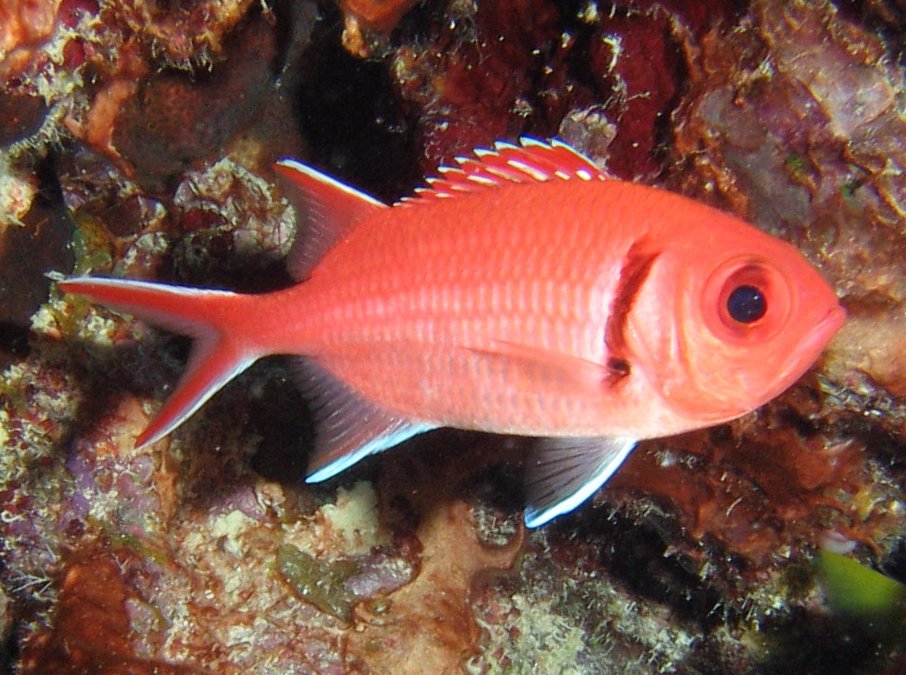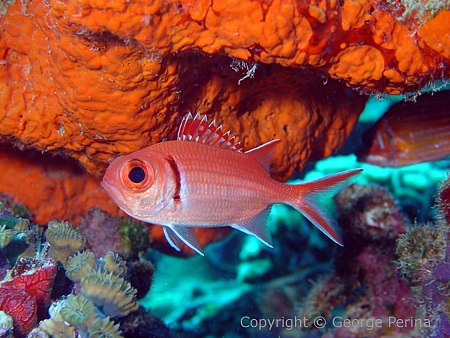
Myripristis jacobus
FAMILY
Holocentridae
TAXONOMY
Myripristis jacobus Cuvier, 1829, Martinique Island, West Indies;
Brazil; Havana, Cuba.
OTHER COMMON NAMES
English: Bastard soldierfish, roundhead conga; French:
Marignon mombin; Spanish: Candil de piedra.
PHYSICAL CHARACTERISTICS
Grow up to 10 in (25 cm) in length. Somewhat similar in
appearance to the squirrelfish, they are red with a large eye,
double dorsal fin, and forked tail, but also sport a brownish
black, vertical bar behind the gillcover that extends to the pectoral
fin.
DISTRIBUTION
Gulf of Mexico and the eastern Atlantic, north to North Carolina
and south to Brazil.
HABITAT
Reefs and other structures, including piers. Commonly seen by
divers in very shallow waters, but also found at depths to 330 ft
(100 m).
BEHAVIOR
Usually a solitary species, but small groups of up to 36 individuals
sometimes school. Under stress, blackbar soldierfishes will
make clicking and grunting noises with the swim bladder.
Divers have seen an occasional blackbar soldierfish swimming
upside down, and they commonly swim upside down in caves.
FEEDING ECOLOGY AND DIET
Nocturnal feeder. Eats shrimp and zooplankton. Predators include
such fishes as the horse-eye jack (Caranx latus), West Atlantic
trumpetfish (Aulostomus maculatus), and Nassau grouper
(Epinephelus striatus).
REPRODUCTIVE BIOLOGY
Engage in external fertilization on days following a full moon.
While the adults prefer shallower reefs, the larvae may travel
well out to sea.
CONSERVATION STATUS
Not listed by the IUCN.
SIGNIFICANCE TO HUMANS
Major part of the pet trade and a minor commercial food fish.
Other popular Animals
Photo Gallery of - Blackbar soldierfish





 Animalia Life
Animalia Life